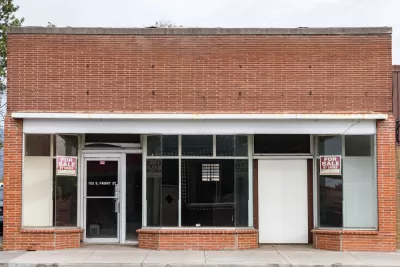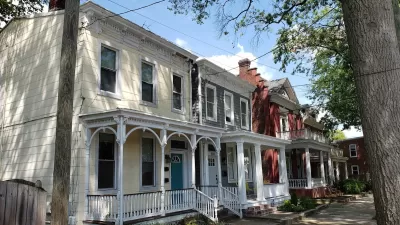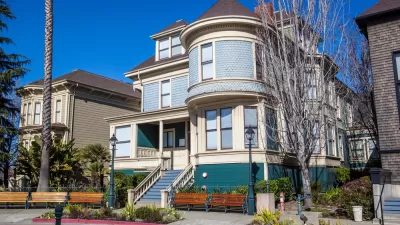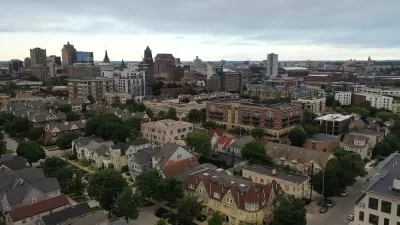Just three percent of Black households own commercial real estate, making it more difficult for Black entrepreneurs to establish businesses and build wealth.

According to an article by Tracy Loh and Andre Perry in Bloomberg CityLab, the racial gap in property ownership is just as stark in commercial real estate as in homeownership. “Only 3% of Black households own commercial real estate, compared with 8% of white households, and their holdings are much smaller — valued at just $3,600 on average, compared with nearly $34,000 for white households,” according to a Brookings report.
This matters because “Nonresidential commercial real estate generated $512 billion in revenue in 2020. What’s more, racial disparities in commercial property ownership impede Black entrepreneurship, since most Americans who start businesses use their personal wealth — chiefly the equity tied up in property.” As the article explains, “This disparity leaves Black Americans with less capacity to establish and grow their firms — and their wealth.”
The authors also note that property in Black neighborhoods is often undervalued, putting owners in those areas at a disadvantage. “ This costs commercial property owners some $171 billion in aggregate wealth,” according to the Brookings analysis.
“The way to end this cycle is to diversify the owners of commercial real estate as well as change the rules that guide investment.” The authors point to Chicago-based TREND, a social enterprise dedicated to changing the landscape of commercial property ownership by facilitating more equitable ownership models. In one example, TREND invited local residents to become co-investors in a 47,000 square foot shopping center for as little as $1,000. “This innovative ownership model creates wealth for investors and provides opportunities for Black entrepreneurs and community residents to work on the property.”
FULL STORY: Commercial Real Estate Has an Equity Problem

Alabama: Trump Terminates Settlements for Black Communities Harmed By Raw Sewage
Trump deemed the landmark civil rights agreement “illegal DEI and environmental justice policy.”

Planetizen Federal Action Tracker
A weekly monitor of how Trump’s orders and actions are impacting planners and planning in America.

Why Should We Subsidize Public Transportation?
Many public transit agencies face financial stress due to rising costs, declining fare revenue, and declining subsidies. Transit advocates must provide a strong business case for increasing public transit funding.

Understanding Road Diets
An explainer from Momentum highlights the advantages of reducing vehicle lanes in favor of more bike, transit, and pedestrian infrastructure.

New California Law Regulates Warehouse Pollution
A new law tightens building and emissions regulations for large distribution warehouses to mitigate air pollution and traffic in surrounding communities.

Phoenix Announces Opening Date for Light Rail Extension
The South Central extension will connect South Phoenix to downtown and other major hubs starting on June 7.
Urban Design for Planners 1: Software Tools
This six-course series explores essential urban design concepts using open source software and equips planners with the tools they need to participate fully in the urban design process.
Planning for Universal Design
Learn the tools for implementing Universal Design in planning regulations.
Caltrans
Smith Gee Studio
Institute for Housing and Urban Development Studies (IHS)
City of Grandview
Harvard GSD Executive Education
Toledo-Lucas County Plan Commissions
Salt Lake City
NYU Wagner Graduate School of Public Service





























